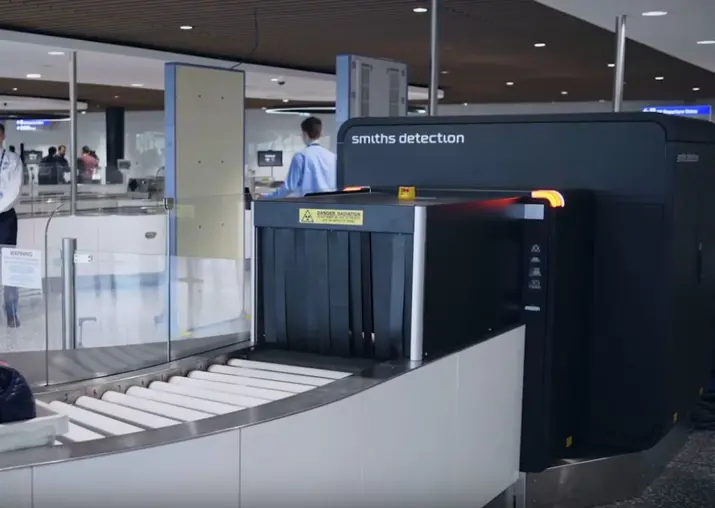REBUILDING PASSENGER CONFIDENCE IN AIR TRAVEL
For air travel to resume and airports to begin recovering from the shock of COVID-19, airport operators and governments need to rebuild traveller confidence that flying is safe. This will require new procedures to address potential health risks, operational efficiency and improvements to counter existing threats from crime and terrorism. Smiths Detection is partnering with airports and security agencies to provide technology solutions that help meet all these challenges in order to revitalise commercial aviation.
Adopting computed tomography (CT) cabin baggage scanners is one way that airports can reduce physical contact, enable more distancing among travellers and take a step towards a fully automated contactless checkpoint, while advancing the ability to detect explosives, weapons and other threats.
MINIMISING CONTACT BETWEEN TRAVELLERS AND SCREENERS
CT technology offers a number of advantages to security screening processes at airports, including minimising the time passengers spend in line with other travellers, and decreasing the level of contact between passengers, travellers, screeners and surfaces, such as trays.
CT technology can allow for liquids and laptops* to remain in bags during screening. This can massively cut down the number of trays handled by both staff and passengers. When paired with a system that delivers an industry leading belt speed of 0.2m/s, the screening process is sped up further.
CT based systems reconstruct data from hundreds of different views into volumetric 3D images. The data richness of volumetric CT technology enables the systems to make very precise decisions about baggage contents and as a result, the best can deliver a false alarm rate as low as 5% – but that will vary between manufacturers. At Smiths Detection, we are continually developing and optimising algorithms to further reduce the false alarm rate of our scanners. This will be fundamental to reducing the number of secondary screenings – requiring close interaction of screeners with passengers and their belongings – and increasing passenger throughput, which can positively impact personal space by improving operational efficiency.
MAXIMISING EFFICIENCY AND SECURITY
To maximise efficiency and security CT checkpoint scanners should be integrated into a checkpoint management system supporting centralised screening in a remote location, mulitplexing images and directed search. Travellers and screeners will benefit from the reduced contact with, and risk of contamination of, carry-on bags in the screening process. Multiplexing increases staff productivity and flexibility in resource planning to react to varying passenger volumes. When using a directed search functionality, any suspicious areas are marked and classified on the images so operators back at the checkpoint know exactly where to target secondary examinations – making rechecks quicker and less intrusive.
ENHANCING AIRPORT THREAT DETECTION CAPABILITIES
COVID-19 has not removed the risk posed by crime and terrorism. Any enhancements to checkpoint screening must now take into consideration how they can support health, efficiency as well as security.
At Smiths Detection we are dedicated to leveraging the high detection performance of our volumetric CT technology as an important element towards achieving the vision of a fully automated & self-service checkpoint. This concept includes using artificial intelligence for automatic object recognition, which could enable alarm-only viewing of X-ray images, reduce the need for close human interaction, minimise contact with surfaces and augment security.
Along with the deployment of other technical and process related measures, the deployment of CT scanners is the foundation of a safe, secure and efficient checkpoint to support the restart of operations.
*dependant on CONOPS configurations

